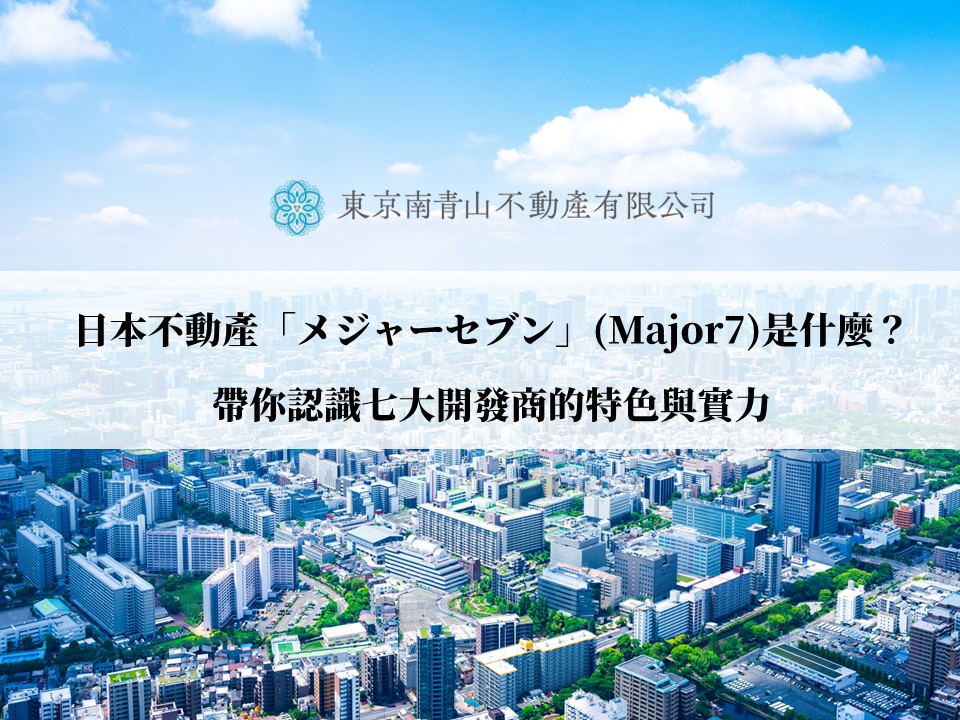Shinagawa Station is one of Tokyo's leading stations with Tokaido Shinkansen. It flourishes as a transportation hub where many people, including not only businessmen but also tourists, come and go every day.
In addition to such convenient transportation, did you know that Shinagawa Station is attractive in many ways? We will introduce Shinagawa Station in detail from various aspects, including the history of Shinagawa Station and its surroundings, the ease of access to sightseeing spots, the livability of the surrounding area, and unique spots around the Shinagawa Station area.
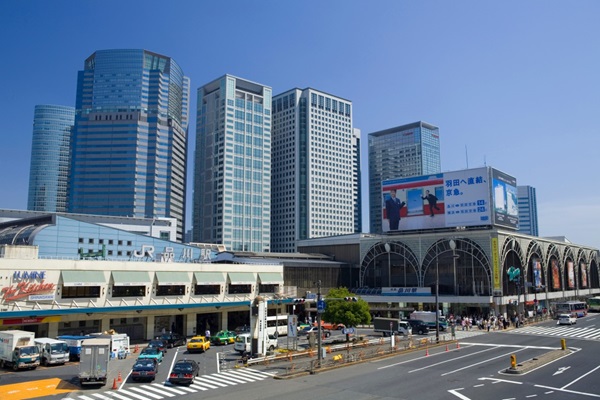
Basic information about Shinagawa Station, another gateway to Tokyo
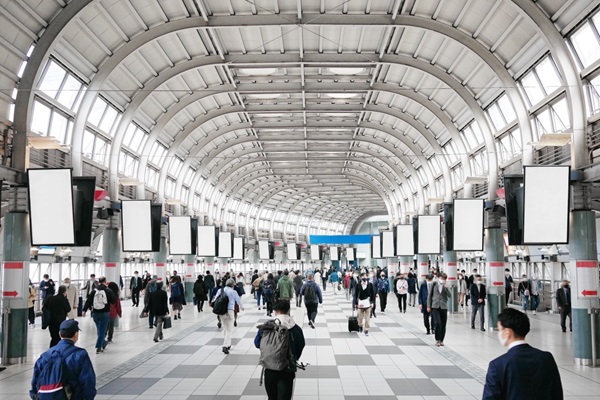
Shinagawa Station, which can be said to be another "gateway" along with Tokyo Station as a stop on the Tokaido Shinkansen, is in Takanawa in Minato City, Tokyo. Located not far from Shinagawa City, it is also characterized by easy access to Haneda Airport and Narita Airport by the Keikyu Main Line and Narita Express.
In addition, 44 digital signage boards (see the image above) installed on the pillars of the passage leading from the ticket gate of Shinagawa Station to the Konan Exit play a role as advertising towers for JR East Japan Planning (jeki). Since there are a lot of people coming and going to Shinagawa Station, it is also a spot with high information dissemination value.
According to the Tourism Statistics Database provided by the Ministry of Land, Infrastructure, Transport and Tourism in 2022, the average number of passengers at Shinagawa Station in 2021 was 425,004 per day. It boasts the sixth-highest number of passenger capacity in Japan Railway.
Source: Ministry of Land, Infrastructure, Transport and Tourism National Land Numerical Information Download Site "Number of Passengers by Station Data"
Source: Statistical Information Research "Statistics on the number of passengers at Shinagawa Station (JR East Japan)"
Crowding in Shinagawa Station per weekday is as follows.
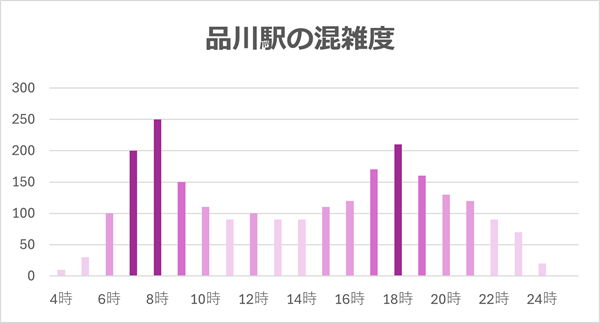
* Created independently by processing from JR East Japan's official website "Station Crowding Situation" and NAVITIME "crowding forecast"
* Classified into four crowding levels according to the numbers on the vertical axis. Very crowded (200~250), crowded (150~200), not very crowded (100~150), vacant (0~100)
There is a tendency for crowding levels to increase in the early hours of 7~8 o'clock. This is because not only people who commute to work from Shinagawa Station but also users of the Shinkansen for business trips and sightseeing are also likely to concentrate during this time.
On Saturdays, Sundays and holidays, there is a lot of traffic from 9 ~ 19 o'clock. Apart from the fact that it is a weekend, it is said that there is a high demand for people coming to Tokyo on the Tokaido Shinkansen to get off at Shinagawa Station instead of getting off at Tokyo Station. Moreover, people returning to Osaka from Haneda Airport and Narita Airport will transfer to Shinagawa Station.
Train Lines serve Shinagawa
Shinagawa Station is served by a total of 8 train lines.
JR East Japan
● Tokaido Line
● Ueno Tokyo Line (Joban Line)
● Yamanote Line
● Yokosuka Line
● Keihin Tohoku Line / Negishi Line
● Narita Express
JR Central
● Tokaido-Sanyo Shinkansen
private railway
● Keikyu Main Line
With these train lines, you can reach Narita Airport (Chiba Prefecture) in the east, Hakata (Fukuoka Prefecture) in the west, Kurihama and Misakiguchi (Kanagawa Prefecture) in the south, and Sendai (Miyagi Prefecture) in the north.
If you are in Tokyo, you can access Asakusa and Oshiage (Keikyu Main Line direct Toei Asakusa Line) without transferring.
There are also many local buses that can take you to famous areas in Tokyo, such as Gotanda Station, Meguro Station, Shinjuku Station West Exit, Roppongi Hills, and Tokyo Tower.
Access from Shinagawa Station to the main station and airport
The ways to get to major stations and airports from Shinagawa Station, and the time it required.
● Tokyo Station: 2 stops on the Ueno-Tokyo Line
● Shibuya Station: 5 stops on the Yamanote Line (Clockwise)
● Shinjuku Station: 8 stops on the Yamanote Line (Clockwise)
● Ikebukuro Station: 12 stops on the Yamanote Line (Clockwise)
● Haneda Airport (Terminal 2): 3 stops on the Keikyu Main Line (towards Haneda Airport Terminal 1 and 2 stations, limited express)
● Narita Airport (Terminal 1): 4 stops (towards Narita Airport Station) by Narita Express (limited express to Narita Airport)
People can access Haneda Airport and Narita Airport without transfers.
Sightseeing spots that can be reached directly from Shinagawa Station
The Tokaido-Sanyo Shinkansen, which passes through Shinagawa Station as well as Tokyo Station, provides access to Atami, Nagoya, Kyoto, Shin-Osaka, Hiroshima, and Hakata. It is characterized by convenient transportation to the western Japan area.
If you take the limited express of the conventional line, you can go to the following areas without transfers.
● Mito (Limited Express Hitachi Tokiwa)
● Sendai (Limited Express Hitachi)
● Ito, Izu Kogen, Kawazu (Limited Express Odoriko)
In addition, the following spots can also be reached by taking conventional trains.
● Yokohama (Tokaido Main Line, Keihin Tohoku Line)
● Kamakura (Yokosuka Line)
● Yokosuka (Yokosuka Line)
Although Shinagawa Station is in the center of the city, it is a place with lots of natural features! Features of the Shinagawa Station area
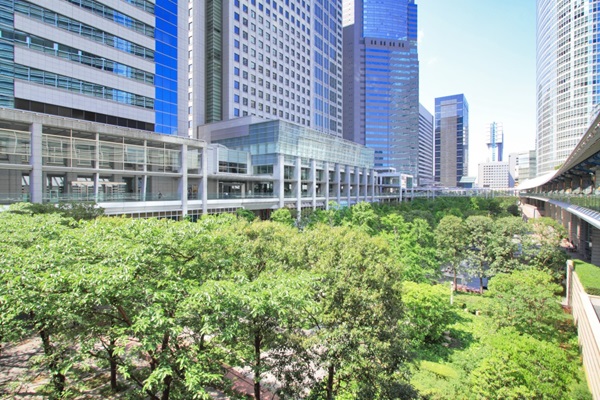
Shinagawa Station is divided into two parts: the Konan Exit in the east and the Takanawa Exit in the west. There are several commercial facilities, amusement facilities, and Hotels at Takanawa Exit. On the other hand, Konan Exit is an area having many condominiums and offices. Moreover, there are many supermarkets, drugstores, schools, restaurants, etc., making it a perfect place to live.
In addition, the area around Shinagawa Station is well known as an office district, but in fact, an appealing characteristic is that it is also a place with lots of natural features. There is a large Japanese garden surrounding the Prince Hotel in Takanawa exit, where 210 cherry trees of 17 species will bloom in spring. There is also a park that takes advantage of the natural topography, people can forget the hustle and bustle of the city there.
Grand Prince Hotel Takanawa Japanese Garden
In addition, there is Shibaura Central Park where you can enjoy seasonal flowers at the Konan exit, and there is a spacious green plaza with an urban oasis in the Shinagawa Season Terrace. If you go to the east side, you will find Konan Green Water Park with lawns and fountains and the combination of greenery and water with the Keihin Canal that spreads out in front of you.
In January 2024, the number of foreign residents in Minato Ward and Shinagawa Ward around Shinagawa Station is as follows:
● Minato Ward 21,278 people
● Shinagawa Ward 15,485 people
Source: Tokyo Metropolitan Government's statistics "Table 1: Foreign Population by Nationality and Region by Municipality (Top 10 Countries/Regions)"
Shinagawa Station is not only easy to access main areas and sightseeing spots in Tokyo but also has many commercial facilities, restaurants, parks, etc. in the vicinity, making it a highly convenient area for foreigners.
The transition of Shinagawa Station, from a railway base to the gateway to the world. Shinagawa Station, the prospects for the future
Shinagawa Station originated in 1872. The first railway in Japan was between Shimbashi to Yokohama. However, due to delays in construction, the route from Shinagawa to Yokohama was temporarily opened first. This was the birth of the Shinagawa Station. In 1885, the Japan Railway Shinagawa Line (now the Yamanote Line) began service, and in 1914, the Keihin Line (now the Keihin Tohoku Line) began service.
The current Takanawa-Guchi station was built in 1953. In 1998, the east-west connecting passage (Rainbow Road) was completed, and Shinagawa Station became the Hashikami station building. As a result, the gap between the Takanawa exit area and the Konan exit area has been eliminated. It became convenient not only for businessmen working in the area but also for residents to travel between the east and west of Shinagawa Station.
In 2003, Shinagawa Station opened as a departure and arrival station for the Tokaido Shinkansen, and the number of passengers increased rapidly. In 2004, the "Konan Exit Station Building" (JR Shinagawa East Building, Atre Shinagawa) was opened, making it easier for passengers of Shinagawa Station to purchase souvenirs and find a place to eat. Shinagawa Station is not just a station in the business district, but also for people who travel to various places on the Shinkansen and people who come from rural areas.
Shinagawa Station is considered to be an important gateway to Haneda Airport and the first station of the Linear Chuo Shinkansen. In the future, it is expected that the area around Shinagawa Station will achieve further development as a transportation hub connecting with cities in Japan and overseas. When Linear Chuo Shinkansen starts operation, Shinagawa Station will be the only stop in Tokyo, so it will be easier for people to gather around Shinagawa Station, and it will be more prosperous.
In 2027, Keikyu Shinagawa Station will be leveled in the same way as JR Shinagawa Station, and a new station building will be built at Takanawa Exit. It is planned to strengthen the transportation network centered on Shinagawa Station, and it is expected that its function as an international exchange center will also be strengthened.
Spots around Shinagawa Station where you can fulfill your daily shopping and weekend outings needs
The area around Shinagawa Station, which is becoming more convenient with the times, has many recommended spots for shopping and sightseeing. Here are some of the best spots for daily shopping, holiday outings, and strolls.
Convenient shopping spots "Ecute Shinagawa" in Shinagawa Station (Ekinaka)
The opening of Shinagawa Station on the Tokaido Shinkansen boosted the number of passengers in 2003. Ecute Shinagawa opened in 2005 as a commercial facility in the station (*Ekinaka) aiming to serve the increased number of passengers.
* A shopping street set up on the premises of a station. It is located in the space inside the ticket gate, and it can be approached without exiting the ticket gate.
There are a variety of shops such as take-out gourmet, sweets, miscellaneous goods, and books, and it is a spot where station users and residents can easily drop by. Since it is inside the ticket gate, people can enter by using an admission ticket or the IC admission service "Touch de Ekinaka".
One of Ecute's shops, "Waraku Beniya", is a Japanese sweets specialty store aiming to pursue Japanese and transmit it to the world. Using Japanese ingredients such as Wasanbon and matcha, you can enjoy "Japanese sweets" made by pastry chefs that make use of the delicate sensibilities unique to Japan.
Ecute Shinagawa Official Website
It's not just about lodging! You can experience the unique sightseeing of Shinagawa at "Shinagawa Prince Hotel"
Shinagawa Prince Hotel in Takanawa exit is an "entertainment town" with many entertainment facilities such as an aquarium, a movie theater, and a bowling alley.
The aquarium opened in 2005 as an urban aquarium where residents and businessmen can easily drop in at any time. The 1,350-seat show facility will feature dolphin and whale shows using projection mapping and other features.
In the approximately 20,000-square-meter garden, which is surrounded by three hotels in the group adjacent to the Shinagawa Prince Hotel, people can enjoy flowering trees and ponds that show the expression of the four seasons, as well as historical and artistic sites.
Shinagawa Prince Hotel Official Website
The "sacred place"-"Yatsuyama Bridge" where Godzilla landed for the first time in the movie“Godzilla”
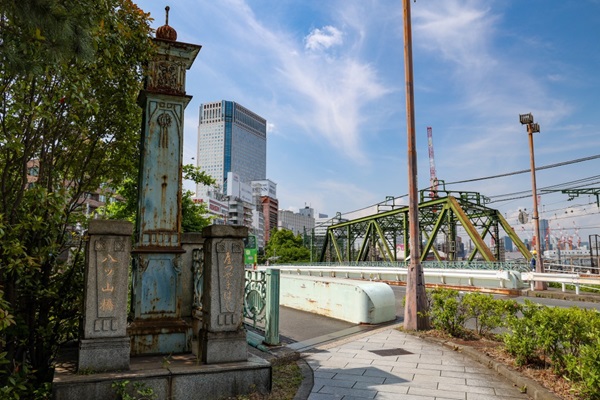
The Yatsuyama Bridge in the southern part of Shinagawa Station is a bridge built in the Meiji era (1872) to intersect the Tokaido and JR Tokaido lines. It was rebuilt in the Taisho era and in the Showa era. The latest version of the Yatsuyama Bridge is the fourth-generation bridge. The name "Yatsuyama" comes from the fact that this area was originally a hill at the tip of the Musashi Plateau, and there were eight promontories protruding from the coast.
In addition, Yatsuyama Bridge is one of the representatives of the history of Japanese cinema. In 1954 (Showa 29), when Godzilla first landed on the mainland, he landed on the Yatsuyama Bridge, which was screened overseas and gained popularity.
A unique view of Shinagawa where the office district and the natural scenery merge! Scenic walking area: "Takahama Canal Promenade"
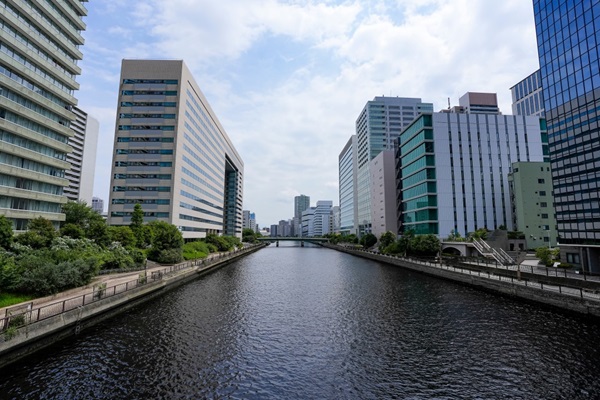
Spreading along the Takahama Canal in the direction of the Konan Exit is the Takahama Canal Promenade with a total length of about 2 km. Pedestrian and bicycle paths are separated, so people are safe to enjoy walking, jogging, and cycling.
It's the perfect spot for exercise after work or a refreshing stroll on a holiday. The reason why people can experience the atmosphere of the "City of Water" while staying in the center of the city is probably because of the unique location around Shinagawa Station.
Takahama Canal Promenade Official Website
Is Shinagawa Station located in Minato City? Why did it become a bullet train station? Fun facts about Shinagawa Station
Shinagawa Station has a long history, and there are some fun facts about its location and the train lines that pass through it.
Why is Shinagawa Station located in Minato City and not in Shinagawa City?
Shinagawa Station is located in Minato City, but many people may wonder why it is not located in Shinagawa City.
Originally, "Shinagawa" referred to the area near the mouth of the Meguro River, and in the Edo era, it flourished as "Shinagawa-juku". The reason why Shinagawa Station is in Minato City is because the residents of Shinagawa-juku opposed it when the railway construction plan was planned. As a result, Shinagawa Station was built in Takanawa in Minato City, which is located in the north.
In addition, the name of Shinagawa Station was named because the location was in a prefecture called "Shinagawa Prefecture" at the time of planning. Although the administrative district has been reorganized, the name of the station has not changed. Therefore, Shinagawa Station is now located in Minato City.
The reason why Shinagawa Station, which is close to Tokyo Station, became the departure and arrival station of the Tokaido Shinkansen
It takes only about 10 minutes to travel from Tokyo Station to Shinagawa Station on the JR conventional line. There are three reasons why the Tokaido Shinkansen departure and arrival stations were added to Shinagawa Station, which is not far from Tokyo Station.
● To increase demand and increase the number of passengers to achieve stable transportation.
● To strengthen the sub-terminal function that complements Tokyo Station.
● To ensure an effective and efficient response to station crowding.
In fact, after the opening of Shinagawa Station, the number of passengers of the Tokaido Shinkansen increased as well as the number of trains. In March 2008, all Tokaido Shinkansen trains began to stop at Shinagawa Station, and the number of passengers increased due to the redevelopment around the station. It seems that we successfully achieved our original purpose.
Summary
Shinagawa Station has a long history and has developed as an advanced station representing Tokyo to the present day. In addition, Shinagawa Station is not only convenient for transportation but also has an abundance of advanced urban scenery such as office districts around the station, and green spaces such as parks and canals.
It has convenient access to major stations and airports in Tokyo, and new commercial facilities and office buildings are planned to be built around Shinagawa Station in the future. It is expected that the attractiveness of the city will increase and real estate prices will rise. In addition, there are many headquarters of famous companies in the Shinagawa Station area. It is foreseeable that the working population will be in high demand in Shinagawa.
If you are considering purchasing real estate around Shinagawa Station, please refer to the information provided in this article.






